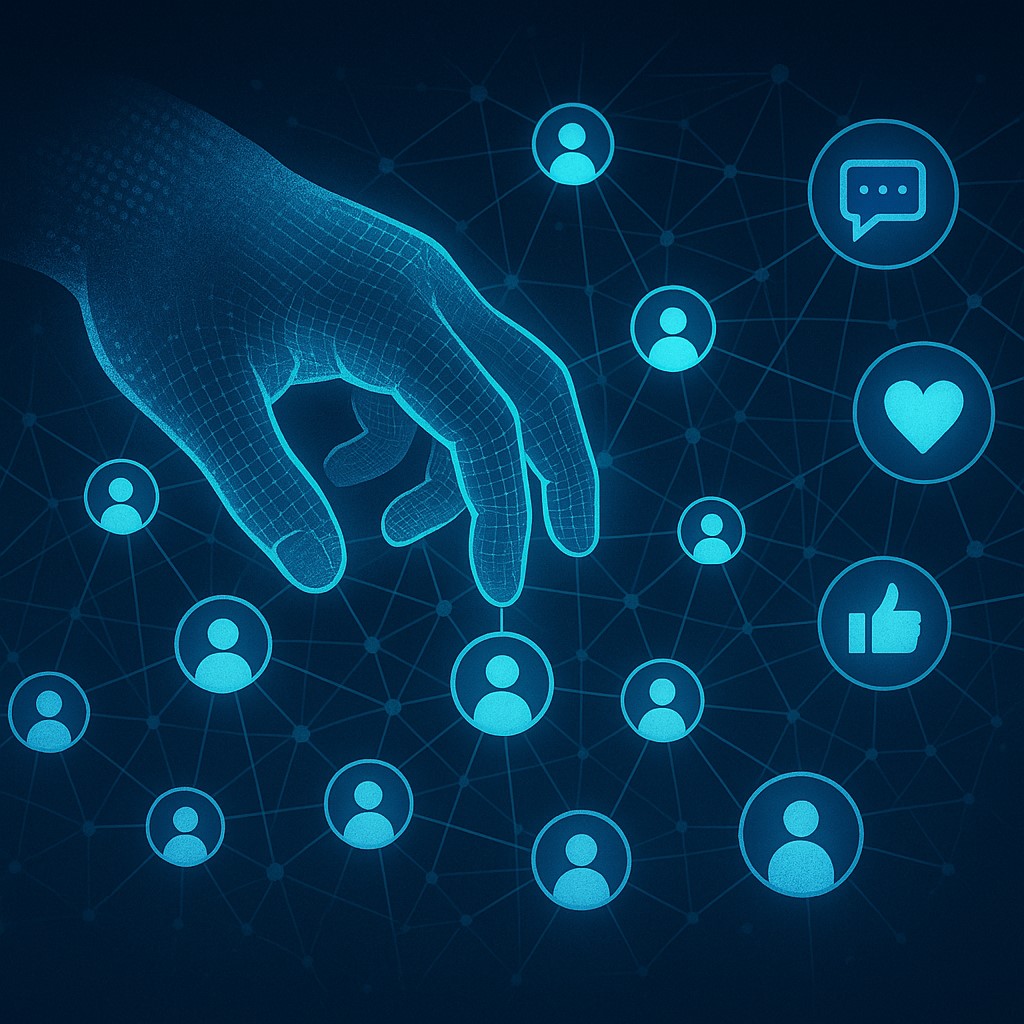by Elias Varen
Introduction
In the interconnected world of social media, information travels instantly, shaping public opinion in real time. But beneath the surface of our digital conversations lies a powerful system of persuasion driven by artificial intelligence. Today, political actors—from candidates and parties to special interest groups—leverage sophisticated AI-powered marketing strategies to manipulate, shape, and even distort public perceptions, often with alarming precision and effectiveness.
Understanding how easily these manipulations can occur is essential, especially as we approach critical junctures like elections or key policy debates.
AI and Social Media: A Perfect Storm
The marriage of artificial intelligence and social media has created an environment where data-driven political advertising thrives. Social media platforms collect vast troves of user data—likes, shares, searches, and interactions—building detailed profiles of individual behaviors, beliefs, and preferences. AI algorithms then mine these datasets to predict, influence, and exploit users’ emotional and psychological triggers.
What once required extensive manual research and guesswork is now automated and algorithmically optimized, allowing political marketers to wield unprecedented influence.
How Marketers Hyper-Target Their Messages
1. Microtargeting: Reaching Individuals, Not Just Demographics
Microtargeting is the practice of directing highly tailored messages to narrowly defined audiences or even individuals. AI-driven analytics platforms segment voters not just by broad categories like age, location, or party affiliation, but also by nuanced psychological traits, online behaviors, emotional triggers, and even predicted vulnerabilities.
For example, a single campaign might deliver hundreds or thousands of subtly different messages, each specifically optimized to resonate emotionally with individual users. Someone who shows signs of economic anxiety might receive messages emphasizing job security, while another who expresses concerns over immigration might receive targeted narratives playing into their fears.
2. Psychographic Profiling: Leveraging Emotional Vulnerabilities
Political campaigns increasingly utilize psychographic profiling, enabled by AI and machine learning. By analyzing patterns in online activities—such as comments, shares, browsing history, and emotional reactions—AI systems construct detailed psychological profiles. These insights identify fears, motivations, insecurities, and aspirations.
These emotional insights then guide the creation of hyper-personalized messaging. For instance, a campaign targeting anxious or uncertain voters might push emotionally charged narratives designed to amplify fear and trigger reactions beneficial to their political objectives.
3. Real-Time Adaptive Messaging: Instantaneous Manipulation
Unlike traditional media, social media allows real-time experimentation and adaptation. AI analytics platforms test thousands of message variations simultaneously. By tracking immediate user responses—clicks, shares, engagement rates—AI quickly identifies which emotional appeals resonate best, adjusting content in real-time to maximize impact.
For example, if messages promoting fear or outrage significantly outperform neutral messages, the AI platform can automatically amplify those narratives, increasing their distribution and influence within specific audience segments.
AI-Driven Amplification of Polarization and Disinformation
AI does more than optimize marketing—it amplifies polarization. Algorithms reward engagement, and unfortunately, extreme content often garners the strongest reactions. Politicians or interest groups exploiting this mechanism may deliberately produce inflammatory or misleading content, confident that AI-driven algorithms will prioritize its visibility because of the intense engagement it generates.
AI-generated content, such as realistic “deepfake” videos, convincing fake news articles, and emotionally charged memes, further compounds this manipulation, spreading rapidly before traditional media can fact-check or correct the narrative.
Case Studies: Real-World Examples
The 2016 Brexit referendum and U.S. presidential elections illustrated clearly how AI-powered microtargeting could alter political landscapes. Political consulting firms, such as Cambridge Analytica, famously leveraged data from millions of social media profiles to build psychological profiles of voters, targeting them with highly customized political messaging to sway public opinion.
Today, such practices have become more sophisticated, pervasive, and accessible—not only to wealthy candidates but to virtually any political actor with moderate resources.
Ethical and Democratic Consequences
The ease with which AI enables targeted political manipulation poses severe risks to democracy:
- Reduced Trust: AI-enhanced disinformation can erode public trust in institutions, elections, and media.
- Polarization: Hyper-targeted, emotionally charged messaging deepens societal divides, fragmenting public consensus.
- Voter Exploitation: Manipulative practices capitalize on emotional vulnerabilities, impairing rational democratic deliberation.
Looking Forward: How Can Society Respond?
Addressing AI-powered political manipulation demands multi-level intervention:
- Transparency and Regulation: Mandating disclosure about how political ads target users and limiting psychographic profiling can mitigate manipulation.
- Algorithmic Oversight: Public oversight and audits of algorithms used for political content delivery can prevent abusive practices.
- Digital Literacy Education: Strengthening public understanding about AI-driven manipulation techniques can help build resistance among voters.
- Tech Company Accountability: Holding social media companies accountable for content amplified through their platforms would incentivize responsible practices.
Conclusion: Navigating the New Reality
AI-driven political manipulation on social media has transformed democratic engagement, making it easier than ever for political actors to exploit psychological vulnerabilities for political gain. The democratization of information technology has paradoxically created avenues for powerful, hidden influence, challenging the integrity of democratic processes.
By understanding the mechanisms behind this manipulation—hyper-targeting, real-time adaptation, and psychological profiling—we gain essential awareness that empowers individuals and communities to resist manipulation and safeguard democracy.
The road ahead requires vigilance, responsibility, and proactive measures—because democracy itself hangs in the balance.

Leave a Reply